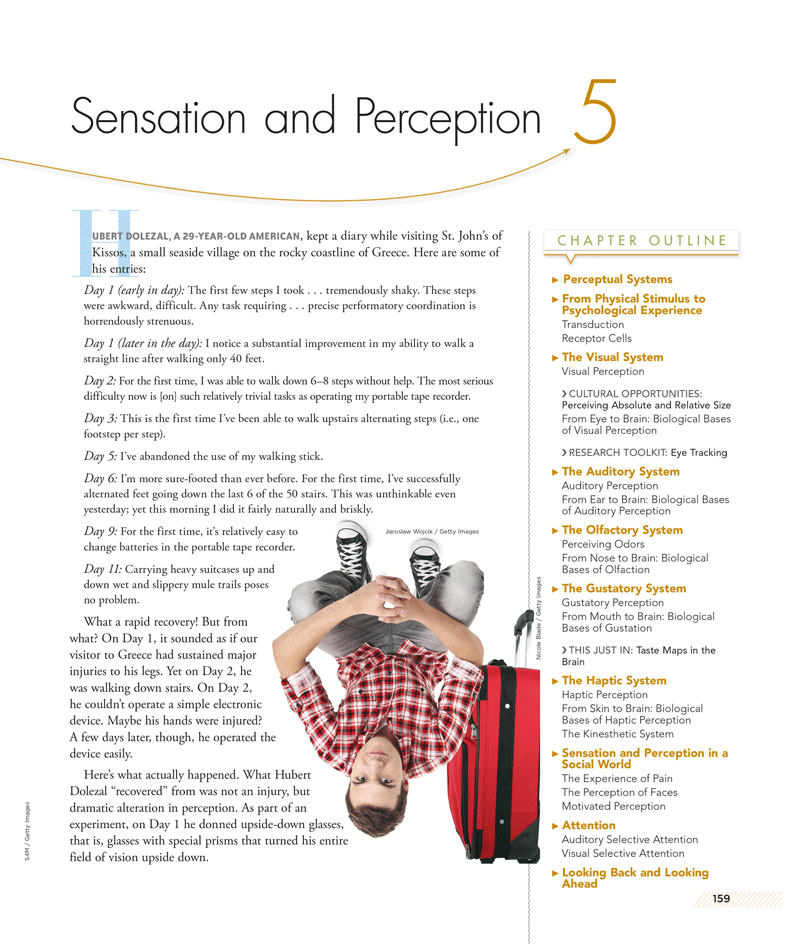Chapter 5. Sensation and Perception
5.1 Introduction


5.2 Slide 2
Welcome to your Try This! research experience for Chapter 5. This activity will test your ability to follow motion in a fast-moving event.
In a moment, you will watch a short video of people passing a basketball.
At first, you will see dark-shirted players passing the basketball to each other. Whenever a player completes a pass, you’ll click a button on your screen as quickly as possible.
The players will sometimes make it appear as if they are passing the ball without actually passing it. Do not click when this happens, or it will be counted as an error. Slow responses will also be counted as an error.
After a few seconds of play, a second team wearing white shirts will gradually fade in on top of the game. Continue to focus your attention on the black-shirted players (recording their passes only) until the end of the video. This task may be rather difficult, but do your best. You will receive your score at the end.
5.3 Slide 3
Click the “Pass Completed” button only when a player in a black shirt completes a pass. Do so as quickly as possible to avoid a response being counted as an error.
When you are ready, press the Play button.
Finished! Now we’ll discuss your results.
5.4 Slide 4
The correct number of passes completed is 20. You answered trialCount.
One last question: Was there anything especially worth noting in the video?
Did you notice, for example, the woman carrying the umbrella?
Re-watch the video if you missed her.
5.5 Activity Completed!
In the original study on which this activity is based (Becklen & Cervone, 1983), only 34% of participants noticed the woman with the umbrella.
As you may have guessed, the point of this activity wasn’t to “test your ability to follow motion in a fast-moving event.” It doesn’t even matter how well you were able to track the players’ completed passes! That instruction was simply a way to get you to pay extra close attention to them. But why?
What do you suppose the point of the study was? Think about this as you return to the chapter on sensation and perception.
This activity inspired by and based on:
Becklen, R., and Cervone, D. (1983). Selective looking and the noticing of unexpected events. Memory & Cognition, 11, 601-608.